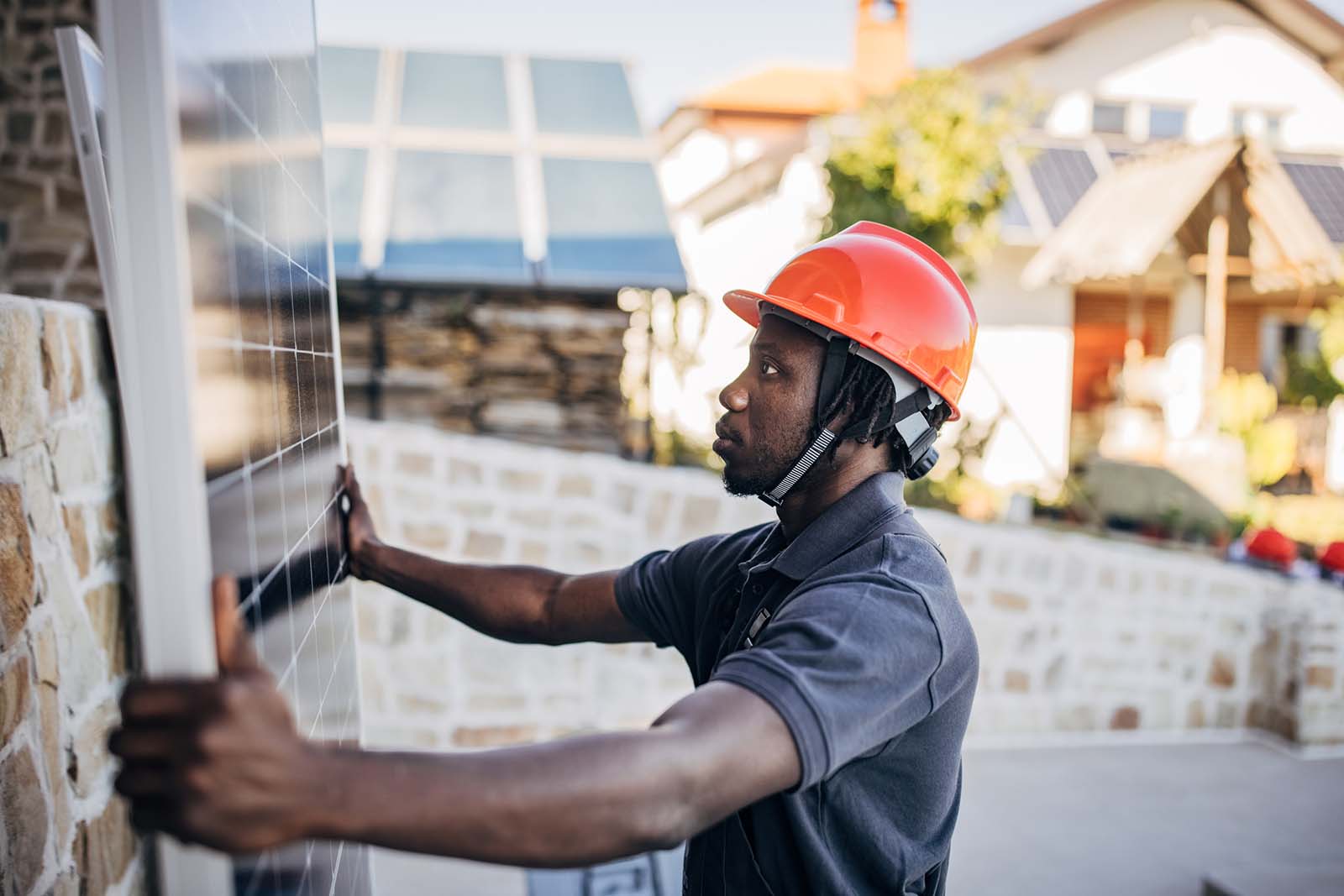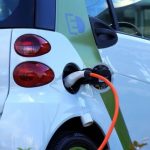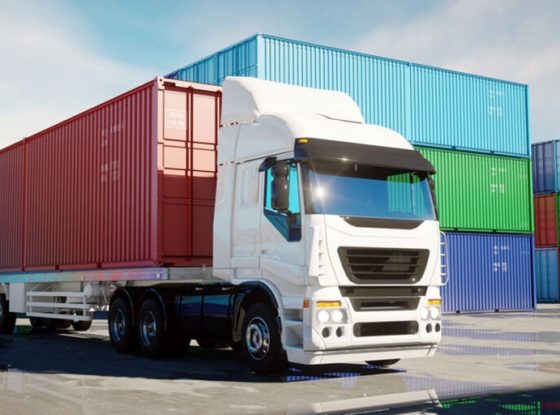Stronger Supply Chain Links to a Clean Energy Future

Workers halfway around the world harvest rare minerals for electric vehicle batteries. Overseas factories crank out solar panels. Cargo trucks, trains, and ships move massive wind turbine blades hundreds of miles.
Goals to shift to a net-zero-carbon emissions economy in the next few decades will demand rapid and exponential deployment of clean energy technologies that are made and transported sustainably. This will trigger big changes in supply chains—where companies buy materials and parts and how they get to and from factories.
The U.S. Department of Energy (DOE) and researchers at its National Renewable Energy Laboratory (NREL) are working with partners to make sure that the country’s manufacturers have the materials, components, infrastructure, and other resources needed to meet ambitious emissions-reduction targets—while making the production of renewable energy technologies as clean as their operation.
Reliance on imports can make the clean energy industry vulnerable to production shortages, trade disruptions, and natural disasters.
“In order to slow the advance of climate change, the nation and the world will have to speed up the manufacturing of clean energy technologies,” said NREL Energy Systems Integration Research Advisor Jill Engel-Cox. “At the same time, we need to make the entire cradle-to-grave process of producing, deploying, and decommissioning those technologies equally sustainable.”
Supply chains are only as strong as their weakest links. Reliance on imports, paired with untapped domestic manufacturing capabilities and the growing need for skilled workers, can make the clean energy industry vulnerable to production shortages, trade disruptions, and natural disasters.
Tsisilile Igogo, a researcher from NREL on detail to DOE’s Office of Policy, was tapped to steer the entire series of clean energy supply chain reports and generate comprehensive policy options. NREL analysts led five of the deep-dive studies, which provided insights about policy actions needed to strengthen America’s energy supply chains. Authors from other national laboratories, DOE, and the private sector were responsible for the remaining eight deep-dive reports in the series.
In parallel, DOE has created a new Office of Manufacturing and Energy Supply Chains (MESC) to match the pace of American innovation with the strong and secure supply chains needed to modernize the nation’s energy infrastructure and support the clean energy transition. The recent series of reports and establishment of the MESC office are both initial steps in implementing supply chain efforts that dovetail with the Bipartisan Infrastructure Law (BIL), Inflation Reduction Act (IRA), and CHIPS and Science Act measures to modernize the U.S. energy infrastructure, address climate change, spur economic growth, and boost national security as the economy transitions to a clean energy future.
NREL’s contributions to these recent initiatives represent just a fraction of NREL research and development (R&D) related to clean energy manufacturing and supply chains. For more than a decade, DOE, other government agencies, and industry partners have turned to NREL analysis and R&D experts to decrease the carbon footprint of manufacturing materials, technologies, and processes. Grounded in science and engineering, plus deep and broad understanding of industry priorities and issues, these innovative whole-system approaches to supply chain research are supported by models, tools, and facilities found only at NREL.
Supply chain strategies aim to reinvigorate U.S. manufacturing, keep costs in check, create new jobs, and equitably distribute benefits—all while fighting climate change.
Meeting Unprecedented Demands and Challenges
The global market for clean energy materials is expected to increase exponentially in the coming decades—jumping by 400% for some materials, up to a mind-boggling 4,000% in the extreme case of lithium and graphite used in electric vehicle batteries. At the same time, a small number of countries control a large share of certain raw material reserves and processing operations, along with production facilities for components critical to clean energy. In addition, human rights and environmental conditions at these overseas operations often do not meet U.S. and international sustainability standards.
The complex manufacturing supply chain includes a vast global network of materials procurement, processing, production, materials recovery, infrastructure, and logistics operations. Recent events have raised awareness of supply chain vulnerabilities in relation to energy as well as consumer goods, construction materials, and other products.
Those challenges were put in particularly high relief during the COVID-19 pandemic. For example, shortages in semiconductors severely hampered U.S. auto production. In turn, the reduced number of vehicles coming off assembly lines negatively affected business profits, hiring patterns, and prices on car lots.
During the COVID-19 pandemic, semiconductor shortages severely hampered U.S. auto production, reducing the number of vehicles coming off assembly lines and impacting business profits, hiring patterns, and car prices.
The new DOE supply chain initiatives and NREL’s larger body of research are intended to help minimize risks associated with expanding U.S. clean energy market share and maximize benefits to the largest possible number of Americans. Boosting U.S. materials production and manufacturing capacity will protect the clean energy industry from supply chain disruptions and their domino effects on businesses, workers, and consumers.
“The U.S. has done a great job investing in innovation. Now it is time to put the same effort into bringing these American innovations to market, so that we’re prepared to meet anticipated growth in demand for clean energy,” said Igogo, who is acting as DOE Office of Policy lead supply chain coordinator. “That starts by increasing support for technology demonstration, deployment, and manufacturing. Passage of the BIL, IRA, and CHIPS Act are significant steps, providing policy tools to move the U.S. in that direction.”
As part of that, DOE is working to reverse a centuries-old, worldwide legacy of energy-related development’s disproportionate impact on underserved communities.
“We need to make sure no one is left behind in the clean energy transition,” Igogo said. “This means that in every link of the supply chain we’re weighing social, economic, and environmental impacts on underserved communities within the U.S. and beyond its borders.”
Supply chain stages include materials extraction, refining, processing, fabrication, assembly, transportation, installation, and decommissioning.
Mapping Strategies To Kick-Start U.S. Manufacturing
Igogo was responsible for overseeing development of the recent clean energy supply chain studies and writing the DOE strategy report based on analysis findings from NREL researchers and others. The report identifies seven key areas for boosting supply chain resilience and lays out 62 policy actions to strengthen the clean energy supply chain that will require coordination, collaboration, and support from communities, government, and industry.
In addition to strategies designed to grow the market for clean energy and build a greater knowledge base for decision-making in this area, Igogo’s report maps out approaches to kick-start U.S. manufacturing through:
- Increasing availability of critical materials
- Expanding domestic manufacturing capacity
- Developing a skilled workforce
- Cultivating diverse, reliable, and socially responsible global supply chains
The studies also examine strategies to recycle and recover materials to feed domestic supply chains while minimizing their carbon footprint.
This high-level set of policy recommendations was delivered from insights provided by the analysis presented in the topic-focused deep-dive reports, complemented by dialogue with experts and public comments gathered by DOE in a formal request for information.
Recent reports map out approaches to kick-start U.S. manufacturing with diverse, reliable, and socially responsible global supply chains.
“Following our lab’s approach to research across the board, the deep-dive supply chain reports do not endorse a particular policy approach,” said Engel-Cox, who coordinated laboratory activity on the reports led by NREL authors. “Our role is to provide the hard data and neutral analysis needed for officials at DOE and elsewhere to make balanced and informed policy decisions.”
The DOE deep-dive reports used analysis to explore challenges and opportunities related to specific technologies, as well as crosscutting topics. The reports led by NREL authors examined supply chains for solar photovoltaic (PV), wind power, energy storage, semiconductor, and fuel cell and electrolyzer technologies.
The NREL-led reports look at supply chain stages including materials extraction, refining, processing, fabrication, assembly, transportation, installation, and decommissioning. Analysts examined the potential impact of new trade policies, tax incentives, and financing options, as well as the possibility that additional research and innovation could uncover new approaches to strengthen supply chains.
NREL researchers also contributed to the deep-dive series’ report on platinum group metals. Each of the reports in the supply chain series involved collaboration with scores of experts from national laboratories, industry, and government agencies.
Taking a Full-System Approach To Greening the Supply Chain
Most global manufacturing relies on fossil fuels, and production of clean energy technology is no exception. A large body of NREL research focuses on understanding the implications of the current supply chain, plus anticipating future needs and challenges.
Much of this ties into the laboratory’s efforts to catalyze development of a circular economy for clean energy—extending the lifespan of materials, components, and products while reducing waste, conserving resources, and boosting efficiency. Ultimately, this approach will make it possible to manufacture goods that use less raw material and energy, last longer, and stay out of landfills through reuse and recycling.
While most experts agree that the impact of the larger supply chain typically dwarfs what happens at an individual factory, related NREL research and development is working to reduce the carbon footprint of manufacturing facilities by powering industrial processes with renewable energy. Other laboratory projects consider substituting materials with an eye toward options that can be extracted with minimal impact on the environment and easily reused, upcycled, or recycled.
“Sustainable manufacturing of clean energy technologies is about more than any specific technology,” said NREL Strategic Energy Analysis Researcher Alberta Carpenter. “It needs to also consider all the upstream activities and materials required to manufacture the technology.”
Other recent NREL projects have focused on identifying materials for lighter and smaller semiconductors, the carbon intensity of sourcing and manufacturing solar PV components, and personal protective equipment manufacturing pinch points at the height of the pandemic. Related research is taking a closer look at the end of products’ useful lives, new ways to make plastics, lithium-ion electric vehicle batteries, and building materials that are easier to recycle and reuse in the fabrication of new products.
Recent NREL projects have focused on the carbon intensity of sourcing and manufacturing solar PV components.
The supply chain and circular economy analyses go hand in hand with techno-economic and life-cycle analyses that NREL researchers conduct to inform decision-makers in setting R&D priorities and making plans to commercialize technologies. Those projects focus on more traditional factors in manufacturing, such as production and material costs, market potential, and component life span.
All of this research relies on accurate, validated data grounded in real-world operations. Companies can be wary of sharing information that might give them a competitive edge, and smaller startups might not have the resources for data collection. NREL’s role as a trusted and unbiased partner makes it possible to aggregate data and create reliable metrics needed to run valuable analyses, while protecting any proprietary information.
This helps NREL assess supply chain and manufacturing options for a broad range of clean energy technologies and market scenarios. The laboratory can look at long-term trends and impacts on multiple industries to explore potential risks and benefits.
The laboratory also manages the Joint Institute for Strategic Energy Analysis (JISEA) and its Clean Energy Manufacturing Analysis Center (CEMAC). NREL and a consortium of research institution and industry partners from around the globe collaborate to provide analysis, benchmarking, and insights on clean energy supply chains and manufacturing. Their efforts address issues related to supply, workforce, and cost constraints in the context of marketplace realities.
NREL’s world-class supply-chain research talent is supported by one-of-a-kind facilities and tools. Researchers at the Composites Manufacturing Education and Technology (CoMET) Facility explore state-of-the-art manufacturing techniques for wind and marine energy technologies, including production methods that might allow large, hard-to-transport components to be manufactured on-site at power plant locations.
With NREL-developed Materials Flows through Industry (MFI) and Lithium-Ion Battery Resource Assessment (LIBRA) modeling tools, researchers can evaluate manufacturing scenarios for a range of industry sectors. These help researchers understand where innovation might make the most significant difference and where it might make sense to shift gears before new designs near production stages.
Connecting the Links Across Technology Areas and Around the World
As more clean energy technology moves into the marketplace, building on this foundation of NREL expertise will become even more vital to establishing resilient and reliable supply chains and manufacturing operations. This complements the laboratory’s broad body of manufacturing R&D, which helps transition clean energy technologies from the laboratory to the marketplace.
In addition to following through on areas identified for further investigation in the recent DOE study, NREL researchers plan to take a wider look at the entire clean energy supply chain and interconnections that span multiple areas. That involves combining supply chain, techno-economic, and life-cycle-assessment analyses across technologies, the lab, and disciplines.
While the laboratory has been studying manufacturing issues related to clean energy for some time, there is greater recognition now of the linkages. Not only do these industries face similar challenges in, say, transporting components from sources thousands of miles away—some of them even use the same critical materials in their components.
Not only do clean energy industries face similar challenges in manufacturing and transporting components—some of them even use the same critical materials.
NREL researchers continue to ever more closely examine the environmental and social impacts related to the clean energy supply chain. This includes looking at the carbon footprint of processes upstream and downstream from the manufacturing facility, as well as effects on air quality, the water supply, agriculture, and human health. Plus, the laboratory is applying energy justice principles to its portfolio of projects, working with underserved communities to identify clean energy needs and minimize economic and health burdens.
DOE and NREL also recognize how powerful global alliances can be. From the nation’s commitment to the worldwide Paris Agreement to DOE’s recent establishment of the Australia-United States Net-Zero Technology Acceleration Partnership and NREL’s work assisting the U.S. State Department in building trade relationships with friendly countries, this international cooperation with allied entities strengthens the clean energy supply chain.
“Focused research on solutions to these challenges has the potential to dramatically expand production of the clean energy technology that protects the environment, local economies, and human societies,” Engel-Cox said. “Looking at the full system can result in a more sustainable energy future.”
Development of the NREL-led DOE deep-dive supply chain reports was supported by the DOE Office of Energy Efficiency and Renewable Energy’s Advanced Manufacturing Office, as well as the Solar Energy, Wind Energy, and Hydrogen and Fuel Cell Technologies Offices. The entire series of supply chain reports was coordinated by NREL detailee Tsisilile Igogo and the DOE Office of Policy, with additional support from the DOE Offices of Clean Energy Demonstrations; Technology Transitions; Nuclear Energy; Electricity; and Cybersecurity, Energy Security, and Emergency Response. Researchers from Argonne, Idaho, and Oak Ridge National Laboratories, along with the National Energy Technology Laboratory, led the development of other deep-dive reports in the supply chain series.
Source : nrel.gov



